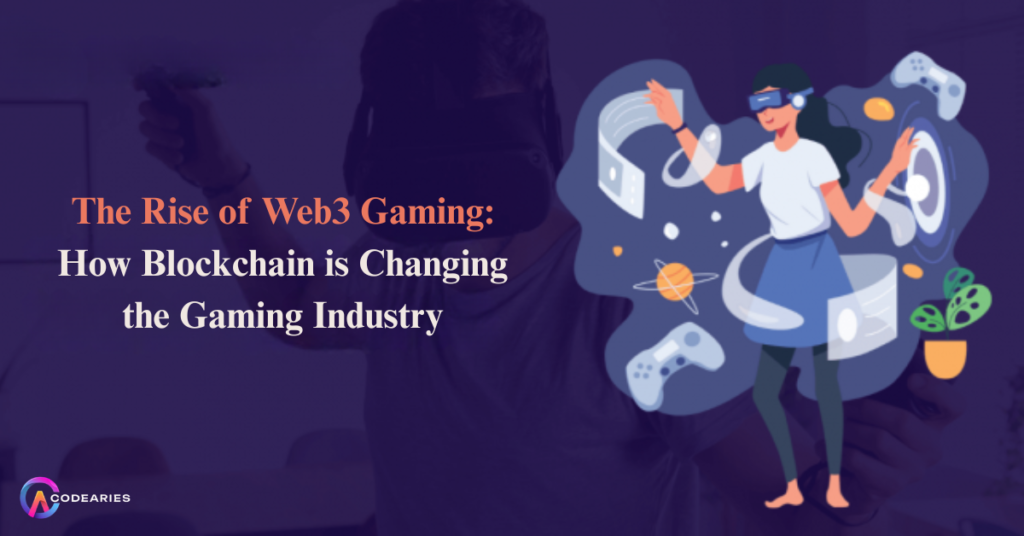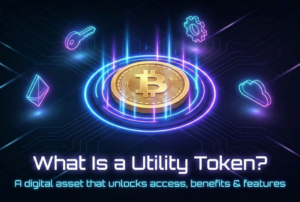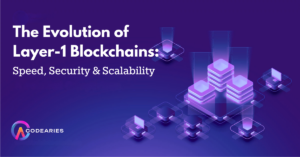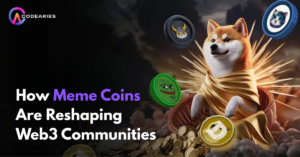The gaming industry has seen incredible innovation over the last twenty years. It has transformed from simple pixelated graphics to rich, immersive worlds with billions of players around the globe. Today, gaming is stepping into a new era—Web3 gaming, which uses blockchain technology. This technology allows for true digital ownership, decentralized economies, and player-driven governance. Blockchain is set to change how games are created, played, and monetized.
In this blog, we examine the growth of Web3 gaming. We will see how blockchain alters the industry rules, the benefits and challenges it brings, and how Codearies supports visionary developers in creating the next generation of smart, connected games.
What is Web3 Gaming?
Web3 gaming adds blockchain features—decentralization, tokenization, and smart contracts—into traditional gaming. Unlike older games where assets are kept on company servers, Web3 games give players:
- True ownership of in-game assets as blockchain tokens (NFTs)
- Interoperable economies where assets can be traded or moved across games and platforms
- Play-to-earn models enabling users to monetize their skills and time
- Decentralized governance with players participating in decision-making through DAOs
These features promise to give players more control, build richer economies, and create a more sustainable ecosystem.
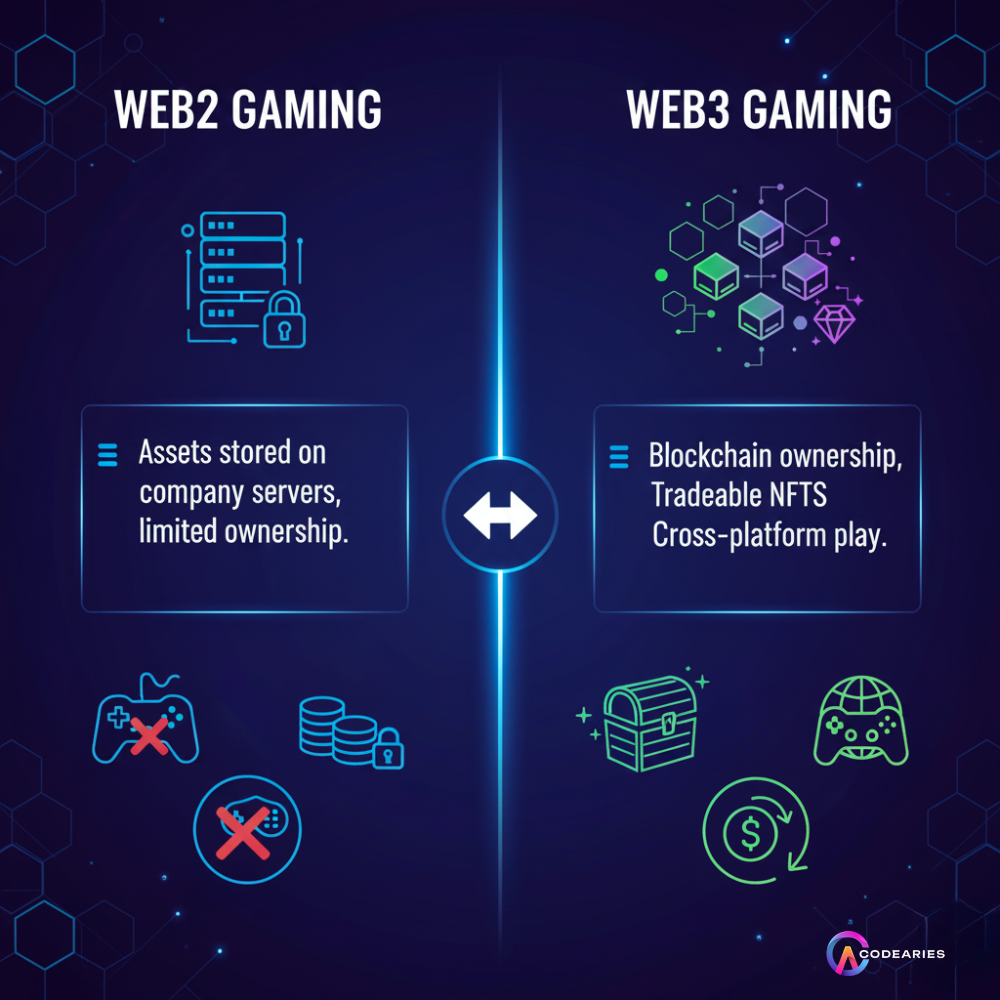
How Blockchain Transforms Gaming
1. Digital Asset Ownership via NFTs
Non-fungible tokens (NFTs) serve as unique, transferable digital property on blockchains. Players can own everything from weapons and skins to virtual land and collectibles—not just licenses for use within a game. Ownership is secured by cryptographic methods and is entirely in the player’s control. Secondary markets thrive, allowing for trading and leveraging assets for decentralized finance (DeFi). Proven provenance helps prevent fraud and counterfeiting.
2. Play-to-Earn and Economic Participation
Players can earn tokens or NFTs through gameplay, competitions, or contributing to the community:
- Rewards can be converted to real-world value.
- Players become stakeholders, deeply invested in the ecosystem’s health.
- Economies flourish as assets circulate among a wider audience.
For example, Axie Infinity’s rapid success showed how communities can earn money through playing.
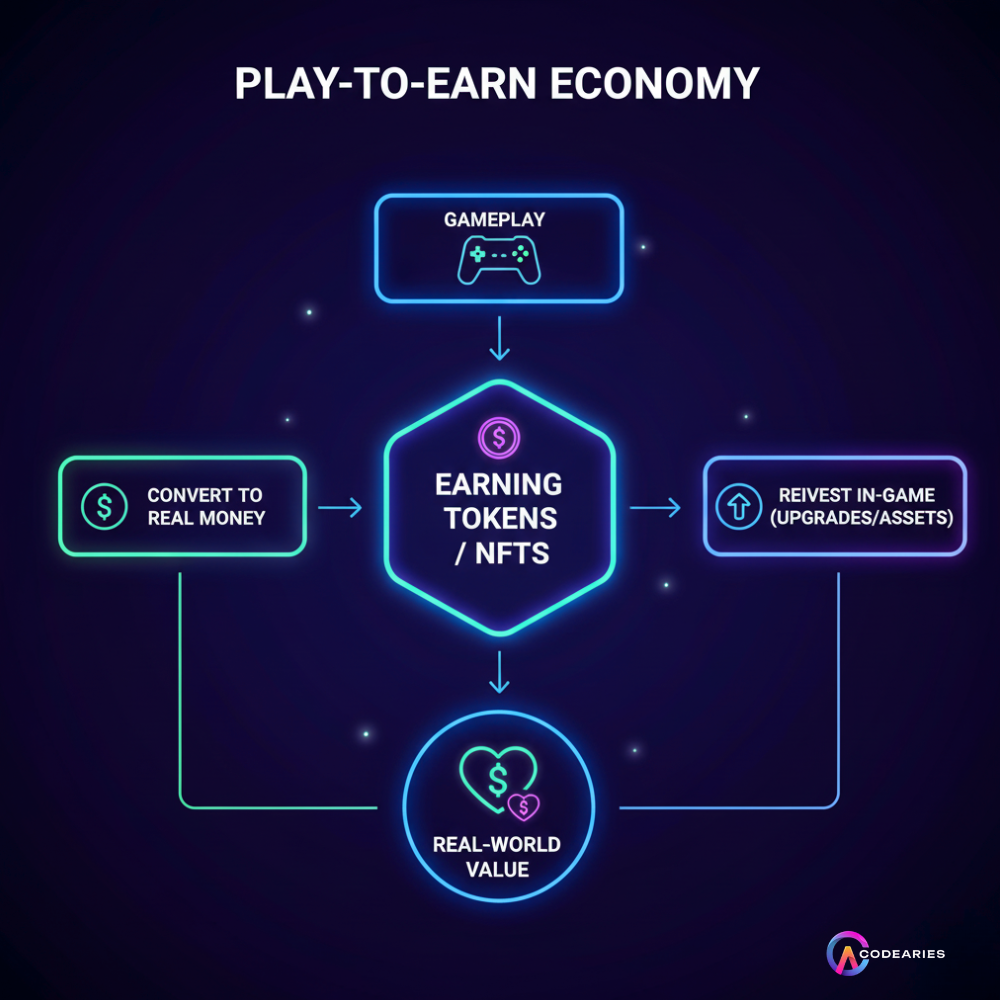
3. Decentralized Game Development and Governance
Players and stakeholders can influence game development via decentralized autonomous organizations (DAOs):
- Proposals for updates, rule changes, or funding get voted on transparently.
- Community-managed funds drive equitable resource allocation.
- Governance aligns with player interests, fostering trust and longevity.
4. Blockchain-Based Interoperability
Web3 enables seamless asset and data transfer:
- Virtual goods migrate across titles/portals.
- Cross-game standards emerge for universal inventories.
- Players hold persistent digital identities, leveling the playing fields.
Benefits for Gamers and Developers
| Benefits for Gamers | Benefits for Developers |
| True control and portability of assets | New monetization via NFTs, token sales, and royalties |
| Opportunities to earn real income | Greater community engagement via DAO governance |
| Transparent, tamper-proof gameplay | Reduced fraud and cheating with blockchain verifiability |
| Cross-platform gameplay and experiences | Shared ecosystems driving organic growth |
| Empowerment to create, modify, and trade assets | Access to new user acquisition channels |
Real-World Examples of Web3 Gaming Innovation
- Axie Infinity (Sky Mavis): Led the play-to-earn movement with collectible creatures and an NFT marketplace.
- The Sandbox: A virtual metaverse where users can buy land, build, and monetize experiences.
- Decentraland: A digital realm powered by NFTs that adds new social and economic layers.
- Illuvium: A high-quality blockchain RPG that integrates DeFi economics.
- Zed Run: Digital horse racing featuring NFT video assets and betting features.
Challenges and Considerations
- User Experience and Onboarding: Managing wallets and understanding blockchain nuances can be challenging.
- Scalability: High transaction costs and slow speeds on some blockchains can disrupt gameplay.
- Regulatory Ambiguity: Changing laws around digital assets and earnings require careful navigation.
- Market Volatility: Fluctuations in tokens can affect player earnings and the stability of in-game economies.
- Sustainability: Concerns about energy use are pushing the shift to greener blockchains.
How Codearies Helps Create Web3 Gaming Success
At Codearies, we empower gaming innovators to turn their ideas into reality with advanced blockchain development and advisory services.
Our Services Include:
- End-to-End Blockchain Game Development: From designing tokenomics and NFT concepts to smart contract engineering and full app development.
- Smart Contract Audits and Security: Reducing risks in economic models, asset ownership, and gameplay.
- DAO and Governance Systems: Creating community-driven gaming ecosystems with clear, automated rules.
- Cross-Chain and Interoperability Solutions: Ensuring seamless user experiences across various blockchain platforms.
- User-Centric Design: Intuitive wallet management and onboarding to simplify player journeys.
- Post-Launch Support and Analytics: Continuing to optimize, enhance features, and analyze player behavior.
With Codearies as your partner, you can create Web3 games that engage players and build thriving economies while setting new standards in the industry.
FAQs
What types of games benefit most from blockchain integration?
Every genre, from MMOs and RPGs to casual games and metaverses, gains value through NFT assets and decentralized economies.
How does Codearies tailor tokenomics for gaming projects?
We create custom token flows that balance player rewards, developer income, and ecosystem health, based on detailed modeling.
Can you help build cross-platform, cross-chain gaming experiences?
Yes, our experts develop interoperable systems that allow asset and identity portability across games and blockchains.
How do you ensure fairness and anti-cheat protections?
We use transparent smart contracts, decentralized verification, and AI-driven anomaly detection.
What’s the typical timeline for launching a Web3 game?
Small to mid-size projects can release MVPs in about 4-6 months, followed by ongoing iterations and scalability planning.

